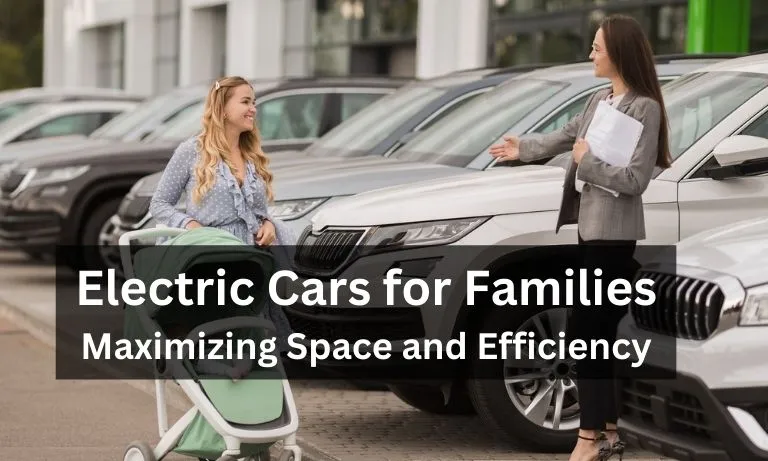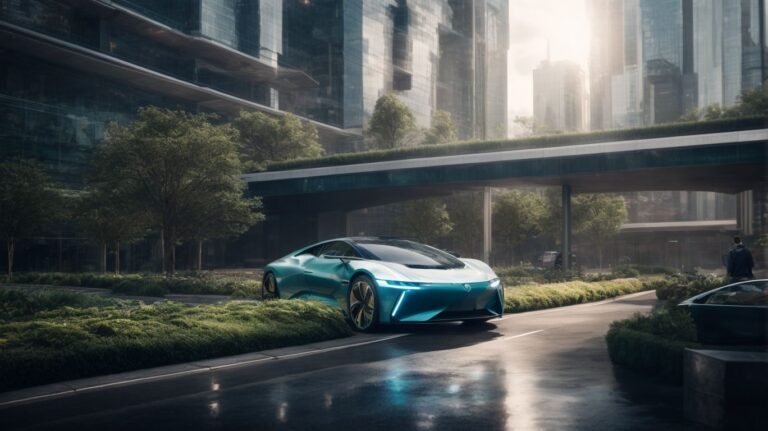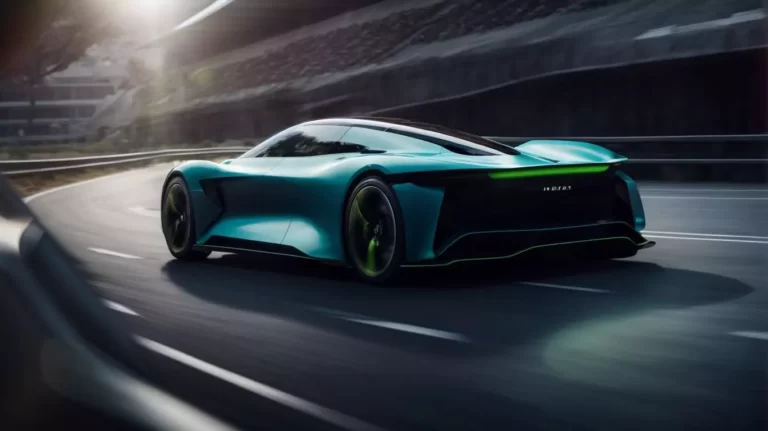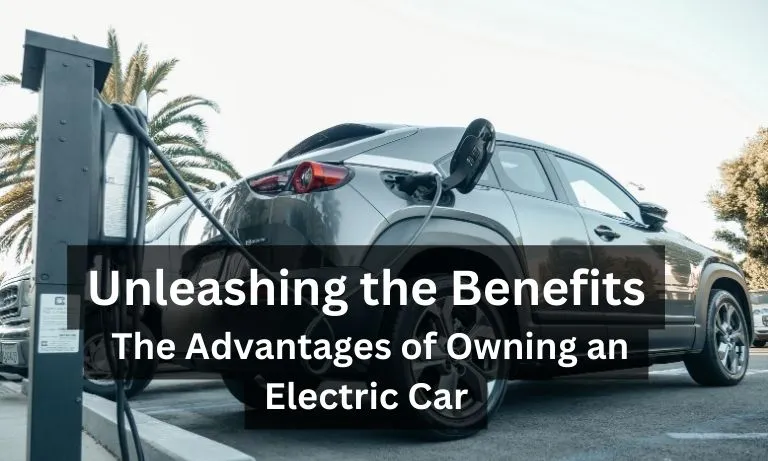Achieving the Perfect Balance: Hybrid Cars Exploring Efficiency and Performance

Welcome to the future! Are you ready to join the movement towards sustainable transportation? The rise in environmental concerns and the increasing cost of fuel have led to a surge in the popularity of hybrid cars. But with so many options on the market, are you feeling overwhelmed? Let’s delve into the world of hybrid cars and discover how they strike the perfect balance between efficiency and performance, easing your eco-conscious mind and fueling your driving passion.
What Are Hybrid Cars?
Hybrid cars are vehicles that combine an internal combustion engine with an electric motor, resulting in increased fuel efficiency and reduced emissions compared to traditional gasoline-powered cars. The electric motor assists the engine during acceleration and low-speed driving, while the engine takes over during higher speeds and when more power is needed. This combination optimizes fuel consumption and minimizes the environmental impact of the vehicle.
Aside from their fuel efficiency, hybrid cars also offer additional benefits such as regenerative braking, which converts kinetic energy into electric energy to charge the battery, and start-stop technology, which shuts off the engine when the car is stationary to save fuel. These features contribute to the overall efficiency of hybrid cars and help to improve their environmental performance.
John, a frequent commuter, was concerned about his carbon footprint but needed a reliable car for his long drives. After conducting thorough research, he made the decision to purchase a hybrid car. Not only did he experience significant fuel savings, but he also noticed a decrease in his emissions. John felt proud to contribute to the preservation of the environment while enjoying a smooth and comfortable ride. His choice to opt for a hybrid car was not only practical but also aligned with his values of sustainability and efficiency.
How Do Hybrid Cars Work?
Hybrid cars are vehicles that combine an internal combustion engine with an electric motor to improve fuel efficiency and reduce emissions. Here is a step-by-step explanation of how hybrid cars work:
- The car starts using the electric motor, which gets its power from a battery pack.
- At low speeds, the electric motor provides all the power needed, so the engine remains off.
- When more power is required, like during acceleration or climbing hills, the engine kicks in and works alongside the electric motor.
- The engine also starts recharging the battery pack while it’s running, using a process called regenerative braking.
- During deceleration or braking, the electric motor switches to generator mode, converting the kinetic energy into electrical energy to recharge the battery.
- Hybrid cars also use a technology called “start-stop,” which automatically turns off the engine when the car comes to a stop and restarts it when the driver releases the brake.
- All the powertrain components, including the engine, electric motor, and battery pack, are controlled by a sophisticated computer system.
The concept of hybrid vehicles dates back to the late 19th century when Ferdinand Porsche built the world’s first hybrid car, the “Mixte,” in 1899. It featured a gasoline engine that powered a generator to charge the batteries, which, in turn, powered the electric motors. However, due to the limitations of technology and the widespread popularity of gasoline-powered cars, hybrid vehicles didn’t gain traction until the late 20th century. The introduction of the Toyota Prius in 1997 revolutionized the hybrid car market and paved the way for more efficient and sustainable transportation options. Today, hybrid cars are becoming increasingly popular as people strive for better fuel efficiency and reduced environmental impact.
What Are the Different Types of Hybrid Cars?
When it comes to hybrid cars, there are several different types that offer a balance between efficiency and performance. Each type utilizes a combination of traditional fuel and electric power to varying degrees. In this section, we’ll discuss the three main types of hybrid cars: parallel, series, and plug-in. By understanding the differences between these types, you can determine which one best suits your needs and preferences.
1. Parallel Hybrid Cars
Parallel hybrid cars are a type of hybrid car that can be found in the current market. These cars are built with a combination of an internal combustion engine and an electric motor, which work together to power the vehicle. Here are the steps to understand how parallel hybrid cars operate:
- Power Generation: The internal combustion engine and the electric motor both generate power to propel the vehicle.
- Power Distribution: The power generated by both the engine and the motor is distributed to the wheels through a transmission system.
- Driving Modes: Parallel hybrid cars have different driving modes, such as electric-only mode, where the vehicle runs solely on electric power, and hybrid mode, where both the engine and motor work in tandem.
- Regenerative Braking: Parallel hybrid cars utilize regenerative braking, which converts the kinetic energy during braking into electrical energy to recharge the battery.
- Seamless Transition: The transition between the electric motor and the internal combustion engine is smooth, allowing for efficient power delivery and a seamless driving experience.
Parallel hybrid cars offer the advantage of improved fuel efficiency and reduced emissions, making them a popular choice among environmentally conscious drivers.
2. Series Hybrid Cars
Series hybrid cars are a unique type of hybrid vehicle that operates differently from other hybrid models. Unlike other hybrids, the internal combustion engine in a series hybrid is not directly connected to the wheels. Instead, it serves as a generator to charge the batteries, which then power the electric motor that drives the wheels. This design allows for more flexibility in terms of engine size and type, as it is not directly responsible for powering the vehicle.
A popular example of a series hybrid car is the Chevrolet Volt. The Volt utilizes a gasoline engine to generate electricity, which is then stored in the battery pack. The electric motor then uses this stored energy to propel the vehicle. This setup offers the advantage of being able to drive solely on electric power for short distances, while still having the convenience of a gasoline engine for longer trips.
Series hybrid cars offer numerous benefits, including improved fuel efficiency and reduced emissions compared to traditional gasoline vehicles. However, their initial cost may be higher due to the complexity of their drivetrain system. Additionally, the driving range of series hybrid cars may be limited on electric power alone, depending on the capacity of their battery pack.
3. Plug-in Hybrid Cars
Plug-in hybrid cars are a popular choice for environmentally conscious drivers looking for a balance between electric and gasoline-powered vehicles. Here are some steps to consider when owning a plug-in hybrid car:
- Select the right model: Research and choose a plug-in hybrid car that suits your needs, considering factors like electric range, charging options, and available incentives.
- Understand charging options: Learn about the different charging options available, such as Level 1 charging with a standard electrical outlet or Level 2 charging with a dedicated charging station.
- Install a home charging station: Consider installing a Level 2 charging station at your home for convenient and faster charging.
- Take advantage of public charging networks: Utilize public charging stations when on the go, especially during long trips or when your electric range is running low.
- Plan your charging and driving: Efficiently plan your trips to take advantage of your electric range and charging opportunities, minimizing gasoline usage.
- Maintain your battery: Follow the manufacturer’s guidelines for battery maintenance, such as avoiding extreme temperatures and keeping the battery charged between recommended levels.
True story: John, an environmentally conscious driver, purchased a plug-in hybrid car to reduce his carbon footprint. He diligently planned his daily routes to maximize his electric range and took advantage of public charging stations during longer trips. By utilizing a home charging station and keeping his battery well-maintained, John was able to significantly reduce his gasoline usage and experience the benefits of owning a plug-in hybrid car.
What Are the Benefits of Owning a Hybrid Car?
As the demand for eco-friendly vehicles continues to rise, hybrid cars have become a popular choice for drivers. But what exactly are the benefits of owning a hybrid car? In this section, we will discuss the main advantages of driving a hybrid, including improved fuel efficiency, reduced emissions, and potential tax incentives. By the end, you will have a better understanding of how hybrid cars strike a balance between efficiency and performance.
1. Improved Fuel Efficiency
To increase the fuel efficiency of your hybrid car, follow these steps:
- Drive smoothly: Avoid sudden accelerations and harsh braking, as they waste energy and decrease fuel efficiency.
- Maintain a steady speed: Consistent speeds help optimize fuel consumption. Use cruise control on highways when possible.
- Plan ahead: Anticipate traffic and road conditions to minimize the need for sudden speed changes or stops.
- Avoid excessive idling: If you’re going to be stopped for more than a minute, turn off the engine to save fuel.
- Reduce excess weight: Remove unnecessary items from your car to lighten the load and improve fuel efficiency.
- Keep up with maintenance: Regularly servicing your hybrid car, including oil changes and tire rotations, ensures it operates efficiently.
Pro-tip: Take advantage of the regenerative braking feature in your hybrid car. This technology converts kinetic energy into electrical energy, which is then used to recharge the battery. By effectively utilizing regenerative braking, you can further enhance the fuel efficiency of your hybrid car.
2. Reduced Emissions
Reduced emissions are one of the significant benefits of owning a hybrid car. Here are three steps you can take to maximize the reduction of emissions:
- Drive in electric mode: Take advantage of the electric motor in your hybrid car by driving in electric mode whenever possible. This mode produces zero emissions and can be used during low-speed city driving or in traffic jams.
- Regenerative braking: Utilize regenerative braking, a feature in hybrid cars that captures energy from the braking process and stores it in the battery. By doing so, you can reduce the wear on your traditional braking system and maximize the efficiency of your hybrid car.
- Regular maintenance: Keep your hybrid car well-maintained to ensure optimum performance and efficiency. Regularly check and replace air filters, spark plugs, and oxygen sensors as recommended by the manufacturer to keep emissions as low as possible.
By incorporating these steps into your driving habits and maintenance routine, you can significantly contribute to 2. reduced emissions and make a positive impact on the environment.
3. Tax Incentives
Tax incentives are a significant benefit of owning a hybrid car. These incentives vary depending on the country and local government policies. Here are some steps to take advantage of tax incentives:
- Research: Familiarize yourself with the tax laws and regulations in your area to understand what incentives are available for hybrid car owners.
- Consult a tax professional: Seek advice from a tax professional who can guide you through the process and help you maximize your tax benefits.
- Keep receipts and documentation: Keep track of all applicable expenses related to your hybrid car, such as purchase costs, installation of charging stations, and maintenance expenses.
- Claim tax credits or deductions: When filing your taxes, ensure you claim the appropriate tax credits or deductions related to your hybrid car ownership.
Pro-tip: Stay updated on any changes to tax laws and incentives for hybrid cars to ensure you are taking full advantage of available benefits.
What Are the Drawbacks of Owning a Hybrid Car?
While hybrid cars offer a balance between efficiency and performance, there are certain drawbacks that potential buyers should be aware of. These drawbacks can affect the overall cost and convenience of owning a hybrid car. In this section, we will discuss the three main drawbacks of owning a hybrid car: the higher initial cost, the limited driving range on electric power, and the potential battery replacement costs. By understanding these drawbacks, you can make an informed decision on whether a hybrid car is the right choice for you.
1. Higher Initial Cost
When considering the purchase of a hybrid car, it’s important to be aware of the higher initial cost compared to traditional gasoline cars. However, the long-term benefits and savings can outweigh this initial expense. Here are a few steps to help you navigate the higher initial cost of owning a hybrid car:
- Research and compare prices: Take the time to research different hybrid models and compare their prices. Look for any available discounts or incentives that can help offset the higher cost.
- Consider long-term savings: While the upfront cost may be higher, hybrid cars often have lower fuel and maintenance costs compared to gasoline cars. Calculate the potential savings over time to see if it balances out the higher initial cost.
- Explore financing options: Look into financing options that may be available for hybrid cars, such as low-interest loans or special financing deals. This can help make the higher cost more affordable.
- Factor in tax incentives: Many governments offer tax incentives or rebates for purchasing hybrid cars. Research the incentives available in your area and include them in your cost analysis.
- Weigh the environmental benefits: Hybrid cars have lower emissions and are more environmentally friendly. Consider the positive impact on the environment when evaluating the higher initial cost.
2. Limited Driving Range on Electric Power
One of the drawbacks of owning a hybrid car is the limited driving range on electric power. However, there are steps you can take to maximize efficiency and extend the electric driving range of your hybrid car:
- Utilize regenerative braking: Take advantage of the regenerative braking system in your hybrid car, which converts kinetic energy into electrical energy and stores it in the battery.
- Plan your routes efficiently: Optimize your driving routes to minimize distance and maximize the use of electric power. Plan ahead to avoid unnecessary detours or traffic congestion.
- Keep your tires properly inflated: Maintaining the correct tire pressure reduces rolling resistance, allowing for smoother and more efficient driving, which can help extend the electric driving range.
By following these steps, you can get the most out of your hybrid car’s electric power and minimize the limitations of the limited driving range.
3. Battery Replacement Costs
When considering owning a hybrid car, one important factor to keep in mind is the cost of battery replacement. While hybrid car batteries are designed to have a long lifespan, they will eventually need to be replaced. Here are some steps you can take to minimize the impact of battery replacement costs:
- Regular Maintenance: Follow the manufacturer’s guidelines for battery maintenance, such as keeping it clean and free from corrosion. Proper maintenance can help prolong the life of the battery.
- Warranty Coverage: Check the warranty terms for your hybrid car’s battery. Most manufacturers offer warranties that cover the battery for a certain number of years or miles. Take advantage of this coverage if needed.
- Budgeting: Start budgeting for potential battery replacement costs early on. Knowing that this expense may arise in the future will help you financially prepare for it.
- Shop Around: If your hybrid car’s battery needs replacement, don’t settle for the first option you come across. Take the time to research and compare prices from different dealers and service centers to find the best deal.
- Consider Reconditioned Batteries: In some cases, reconditioned batteries for hybrid cars can be a more affordable alternative to brand new batteries. Explore this option and consult with professionals to determine if it’s a viable choice for your vehicle.
True story: Mary, a hybrid car owner, experienced a battery failure after seven years of use. Thanks to her diligent maintenance and warranty coverage, she was able to get her battery replaced at a reduced cost. Her proactive approach to budgeting and shopping around also helped her find a reputable service center that provided quality service without breaking the bank. Mary’s experience highlights the importance of being prepared and informed when it comes to battery replacement costs for hybrid cars.
How Can You Maximize the Efficiency of Your Hybrid Car?
As hybrid cars continue to gain popularity for their eco-friendliness and fuel efficiency, many drivers are looking for ways to maximize these benefits. In this section, we will discuss three key strategies for optimizing the efficiency of your hybrid car. From utilizing regenerative braking to planning your routes more efficiently, we will explore practical tips that can help you get the most out of your hybrid vehicle. Let’s take a closer look at how you can balance efficiency and performance in your daily driving habits.
1. Utilize Regenerative Braking
Regenerative braking is a crucial feature in hybrid cars that helps to maximize their efficiency. Here are three steps to effectively utilize regenerative braking:
- Anticipate stops: Pay attention to the traffic flow and road conditions ahead to anticipate when you will need to stop. By planning ahead, you can start coasting and use regenerative braking to slow down the car instead of relying solely on the traditional brakes.
- Adopt a smoother driving style: To make the most of regenerative braking, adjust your driving style. Gradually release the accelerator pedal instead of abruptly lifting your foot off it. This allows the regenerative braking system to capture more energy from the motion of the car and convert it back into electrical energy.
- Use the paddle shifters: Some hybrid cars are equipped with paddle shifters behind the steering wheel. These can be used to manually adjust the level of regenerative braking. By increasing the level, you can enhance the energy recaptured during braking.
John, a hybrid car owner, embraced the practice of utilizing regenerative braking. By anticipating stops and adjusting his driving style, he noticed a significant improvement in his fuel efficiency. Over time, he saved money on fuel costs and reduced his carbon footprint, all thanks to the simple practice of utilizing regenerative braking.
2. Plan Your Routes Efficiently
Efficiently planning your routes can help maximize the benefits of owning a hybrid car. Here are some steps you can take:
- Identify the most fuel-efficient route: Use navigation apps or online maps to find the shortest and least congested routes.
- Avoid stop-and-go traffic: Heavy traffic and frequent stops can reduce the efficiency of your hybrid car. Try to avoid routes with heavy congestion and choose roads with fewer traffic lights.
- Take advantage of regenerative braking: Plan your route to include downhill sections or areas with frequent braking. This will allow your hybrid car to capture and store energy during braking, improving fuel efficiency.
- Consider recharging options: If you have a plug-in hybrid car, plan your routes to include charging stations along the way. This will allow you to use more electric power and reduce reliance on the internal combustion engine.
- Combine multiple errands in one trip: Consolidating your errands into one trip can minimize the distance traveled and reduce the number of times you need to start your car, improving fuel efficiency.
3. Keep Your Tires Properly Inflated
Proper tire inflation is crucial for maximizing the efficiency and performance of your hybrid car. Maintaining the correct tire pressure offers several benefits, including improved fuel economy, better handling, and increased safety.
- Regularly check tire pressure: Use a tire pressure gauge to ensure that your tires are inflated to the recommended pressure levels. This information can usually be found in your vehicle’s owner’s manual or on a sticker on the driver’s side door jamb.
- Inflate tires to the correct pressure: If the tire pressure is too low, it can increase rolling resistance, leading to decreased fuel efficiency. On the other hand, overinflated tires can result in a harsher ride and reduced traction. Follow the manufacturer’s guidelines for the proper tire pressure.
- Check tire pressure when tires are cold: Tire pressure can fluctuate with temperature changes. It’s best to check tire pressure when the tires are cold, as driving heats up the tires and can affect the readings.
- Monitor tire tread: Proper tire tread depth ensures good grip and traction. Check the tread regularly and replace tires when the tread depth becomes too low.
- Rotate tires regularly: Rotating your tires helps to ensure even wear and prolong their lifespan. Consult your owner’s manual for the recommended tire rotation schedule.
What Are the Latest Advancements in Hybrid Car Technology?
The automotive industry is constantly evolving, and hybrid cars are no exception. In this section, we will dive into the latest advancements in hybrid car technology, which aim to strike a balance between efficiency and performance. From solar panel roofs to wireless charging, these cutting-edge features are revolutionizing the way we think about hybrid vehicles. We’ll also discuss predictive energy management systems, which optimize the use of both electric and gas power for a more seamless driving experience.
1. Solar Panel Roofs
Solar panel roofs are a cutting-edge feature in hybrid cars that harness the sun’s power to improve energy efficiency. To fully utilize the benefits of solar panel roofs, follow these steps:
- Utilize sunlight: Park your hybrid car in direct sunlight to absorb the maximum amount of solar energy. This will help charge the vehicle’s battery and reduce reliance on the internal combustion engine.
- Optimize positioning: Position your car in a way that maximizes its exposure to sunlight. Parking in open areas or in spaces with minimal shading will ensure optimal absorption of solar energy.
- Regular cleaning: Keep the solar panels clean and free from debris to ensure maximum absorption of sunlight. Regularly clean the panels with a soft cloth and mild detergent to remove any dirt or dust.
- Monitor energy generation: Many hybrid cars equipped with solar panel roofs have a display that shows the amount of energy generated. Keep an eye on this display to understand how effectively your car is utilizing solar power.
- Energy management: Use the energy generated from the solar panels for various functions in your car, such as powering the air conditioning system or charging electronic devices. This will further reduce reliance on traditional fuel sources.
By following these steps, you can fully utilize solar panel roofs and enjoy the benefits of renewable energy in your hybrid car.
2. Wireless Charging
Wireless charging technology is an innovative feature in hybrid cars that offers convenience and ease of use. Here are the steps to utilize wireless charging:
- Purchase a wireless charging pad compatible with your hybrid car model.
- Install the wireless charging pad in your garage or designated parking spot.
- Ensure that your hybrid car is equipped with wireless charging capability.
- Park your car directly over the wireless charging pad, aligning it with the designated markings.
- The wireless charging pad will automatically detect your car and start the charging process.
- Monitor the charging progress through the car’s dashboard or mobile app.
- Once the battery is fully charged, the wireless charging pad will stop supplying power.
- Unplug the wireless charging pad and move your car from the charging area.
A true story showcases the convenience of wireless charging. John, an owner of a hybrid car with wireless charging, used to struggle with plugging and unplugging his car every day. After installing a wireless charging pad, John found it much simpler and faster to charge his car without the hassle of cables. Now, he enjoys the convenience of wireless charging, making his daily routine more efficient.
3. Predictive Energy Management Systems
3. Predictive Energy Management Systems in hybrid cars are innovative technologies that optimize the performance and efficiency of the vehicle. These systems use real-time data and advanced algorithms to predict driving conditions and adjust power distribution accordingly.
Here are some steps to maximize the benefits of predictive energy management systems:
- Utilize eco-driving techniques such as gentle acceleration and deceleration to optimize energy usage.
- Take advantage of regenerative braking, which converts kinetic energy into electrical energy and stores it in the battery for later use.
- Plan your routes efficiently to minimize unnecessary stops and maximize the use of electric power.
By following these steps, you can enhance the efficiency and performance of your hybrid car. Remember to stay updated on the latest advancements in hybrid car technology for even more ways to improve your driving experience.






